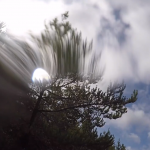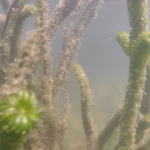… meanwhile, Sukandar connects the air pollution sensor
Here’s a typical data readout with the sensor on my desk:
PM1_0_SP 9
PM2_5_SP 11
PM10_SP 11
PM1_0_UAE 9
PM2_5_UAE 11
PM10_UAE 11
Dia0_3 1650
Dia0_5 446
Dia1_0 68
Dia2_5 2
Dia5_0 0
Dia10 0
All parameters fluctuate quite a lot, but maybe that’s just the baseline noise in a “clean” environment and will not be relevant once out on the streets. e.g. Dia0_3, the most sensitive one, showed values between 1400 and 2300 just sitting on my desk, and even putting it in a box brought down the upper limit only to about 2000. For in-door testing I had heard that candles create quite a lot of fine particles, but none of the parameters reacted in a meaningful way :(.
Only when I blew out the candle and the smoke entered the sensor I got a spike – this however was quite a dramatic one, saturating both Dia0_3 and Dia0_5
The lag I observed was about 20s to reach baseline levels again after this spike. If you add extra nozzles or wind-shields etc. I suppose this value will be even higher. So I guess just going from a busy street into a side-street will not give you much perceptible response. You probably need to enter a park to get something meaningful… But that’s just speculation at the moment.
The important thing at this stage is confirming that a nozzle of some kind to direct air flow will be necessary. And the optimum way to do this will be after making a swiveable nozzle that we can aim in different directions from the sonic bikes box. July Environmental Bike Lab work, here we come.





